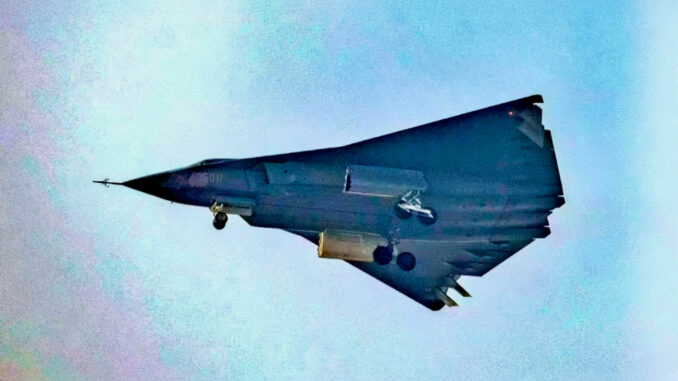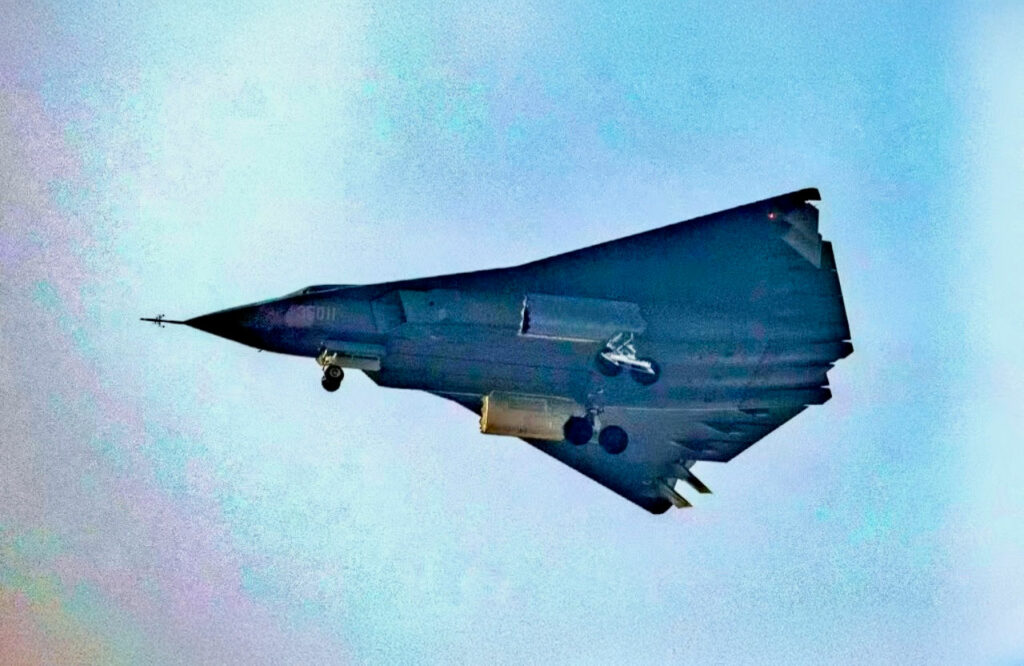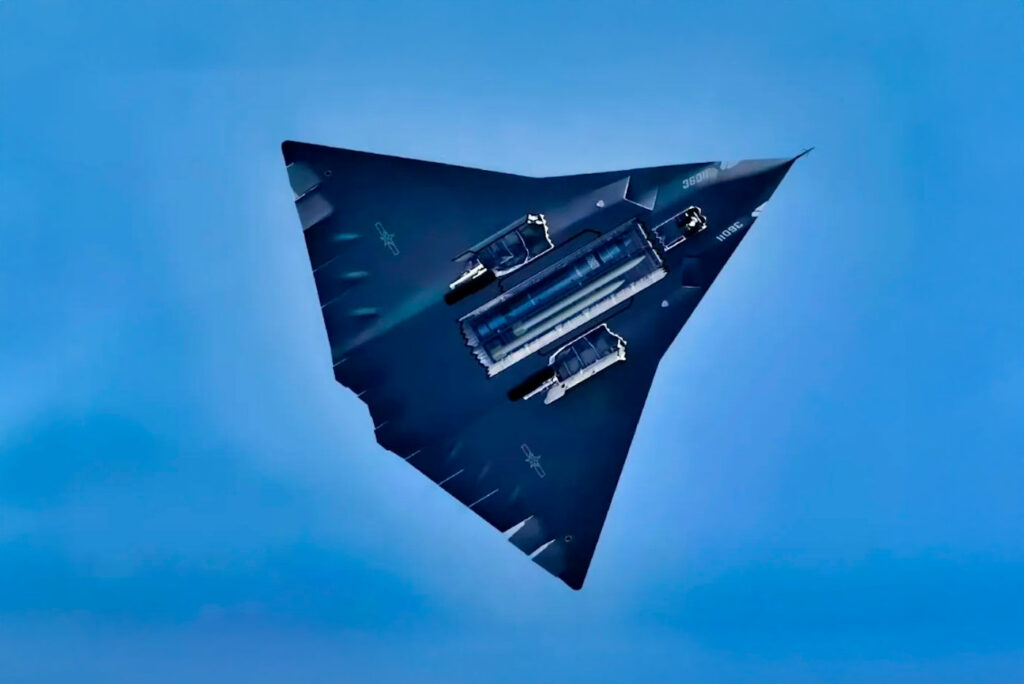
China’s J-36 stealth fighter’s tailless, diamond-shaped design redefines air combat with enhanced stealth, long-range capabilities, and global implications.
China’s J-36: Redefining Air Superiority
On December 26, 2024, China unveiled its latest military innovation: a prototype of its sixth-generation fighter jet, unofficially dubbed the J-36. With a tailless, diamond-shaped design, the J-36 introduces advanced stealth technology aimed at reducing radar detectability while promising enhanced performance for long-range missions. This aircraft represents a significant leap in aerial combat technology, cementing China’s position as a major player in global military aviation.

Key Technical Features of the J-36
Tailless, Diamond-Shaped Design
The most striking aspect of the J-36 is its tailless configuration. By eliminating traditional vertical stabilizers and adopting a diamond-shaped fuselage, the aircraft reduces radar cross-section (RCS). This design minimizes the angles that can reflect radar waves, making the aircraft harder to detect by modern radar systems.
Stealth Capabilities
The aircraft’s shape, combined with radar-absorbing materials, underscores its focus on stealth operations. The absence of external hardpoints and internal weapon bays further reduces radar visibility, enabling the J-36 to operate undetected in hostile airspace.
Long-Range Capabilities
Reports suggest the J-36 is designed for extended operational range, likely incorporating advanced fuel-efficient engines and internal fuel storage. This positions the jet for strategic missions, such as patrolling contested territories like the South China Sea or conducting reconnaissance in remote areas.
Artificial Intelligence (AI) Integration
Sixth-generation fighter jets are expected to integrate AI-driven systems, and the J-36 is no exception. Autonomous flight capabilities, AI-assisted target acquisition, and adaptive mission planning could allow the aircraft to operate in complex environments with minimal pilot input.
Network-Centric Warfare
The J-36 is likely equipped to operate as part of a broader networked battlefield system, communicating with other aircraft, drones, and ground stations in real time. This enhances situational awareness and allows coordinated strikes with precision.
Strategic Advantages for China
The development of the J-36 provides China with multiple strategic benefits:
Enhanced National Defense
The J-36 strengthens China’s air defense capabilities, offering a platform capable of countering advanced threats like the F-35 and the Su-57. Its stealth and long-range capabilities make it ideal for both defensive and offensive missions.
Projection of Power
With long-range operational capabilities, the J-36 enables China to project power beyond its borders. This is particularly significant in geopolitically sensitive areas like the South China Sea and the Taiwan Strait.
Boosting Domestic Aerospace Industry
The J-36 showcases China’s growing technological expertise, bolstering its aerospace sector and reducing reliance on foreign technology. This aligns with the country’s broader push for self-reliance in defense manufacturing.
Implications for the Rest of the World
The introduction of the J-36 is not only a milestone for China but also a wake-up call for other nations.
Accelerated Arms Race
The J-36 sets a benchmark for stealth and sixth-generation technologies, compelling rival nations like the United States and Russia to accelerate their own programs. The F-X program in the U.S. and Su-75 Checkmate in Russia may see increased funding and expedited timelines.
Shifts in Regional Balance
In Asia, the J-36 could alter the military balance, particularly in contested areas such as the East and South China Seas. Neighboring countries like Japan, South Korea, and India may respond by upgrading their own aerial fleets or forming stronger alliances.
Export Opportunities and Global Markets
If China decides to market the J-36 internationally, it could disrupt the fighter jet export market, currently dominated by the U.S. and European nations. Nations seeking cost-effective alternatives to the F-35 may view the J-36 as an attractive option.

Challenges and Limitations
While the J-36 represents a significant leap forward, challenges remain:
Reliability and Testing
As a prototype, the J-36 requires extensive testing to ensure reliability in various combat scenarios. Achieving the desired balance between stealth, speed, and maneuverability is a complex engineering challenge.
Cost and Production
The development of sixth-generation jets is resource-intensive. Scaling production while maintaining quality may pose economic and logistical challenges for China.
Counter-Stealth Technologies
Advances in radar and detection technologies could reduce the effectiveness of the J-36’s stealth features over time. Competing nations are already developing counter-stealth systems to neutralize these capabilities.
The J-36 represents a pivotal moment in military aviation, showcasing China’s ambition to lead in next-generation technology. Its combination of stealth, AI integration, and long-range capabilities redefines the possibilities for aerial combat. However, its long-term impact will depend on successful integration into China’s broader defense strategy and the global response it provokes.
As the J-36 takes flight, the world watches closely, bracing for what this development means for the future of warfare and international relations.
War Wings Daily is an independant magazine.